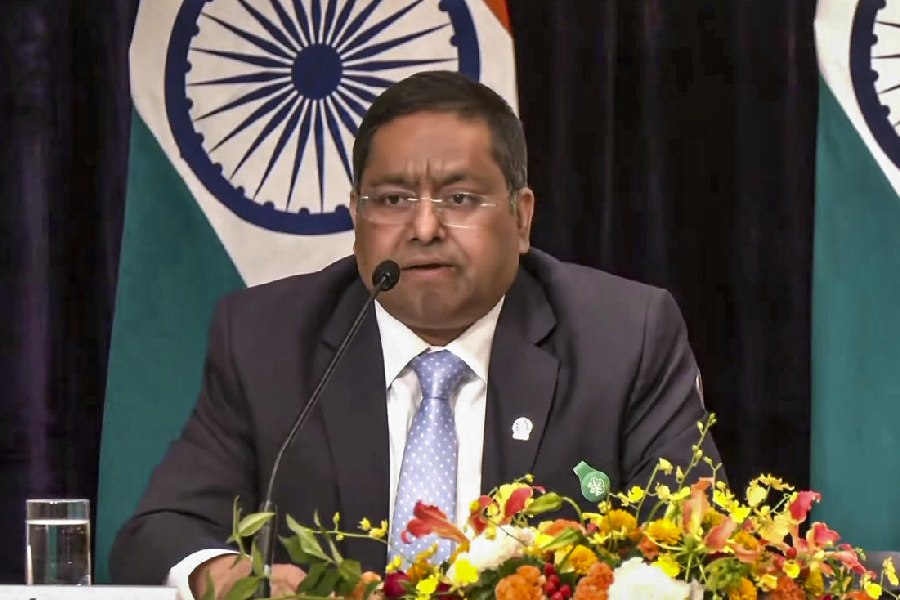


ADO Additives Ltd, Thirumalachari Ramasami, honorary professor at IISER, Sourav Pal, director of IISER, and Raja Shunmugam, associate professor, IISER, demonstrate the functioning of the kit on Wednesday. Pictures by Sanat Kr Sinha
Kalyani: The Indian Institute of Science Education and Research (IISER) Calcutta has come up with a kit for easy and accurate detection of arsenic in potable water and its removal.
The Arsenic Sensing and Arsenic Removal kit developed by IISER scientists will be able to detect and remove even 0.02mg arsenic in a litre of drinking water, institute director Sourav Pal said on Wednesday.
The permissible limit of arsenic in groundwater is 0.01mg per litre, according to the World Health Organisation.
In India, the permissible limit, though, is 0.05mg because of widespread consumption of water drawn through deep tube wells.
The autonomous institute under the HRD ministry is in Nadia, where the arsenic level is more than 2mg per litre of drinking water.
Arsenic contamination is highest in Bengal. "The districts of East and West Burdwan, Malda, Hooghly, Howrah, Murshidabad, Nadia, North and South 24-Parganas have the highest levels of contamination," an IISER scientist said.
"There are 83 affected blocks in these districts... rampant use of tube wells have led to the problem."
Calcutta, too, is not immune to the problem. Deep tube wells are used in several housing complexes in pockets along the Bypass.
Deep tube wells bring up arsenic along with water because they go beyond several aquifers, the scientist said.
The existing way of detecting arsenic is tedious and gives a rough estimate and this compounds the problem, Raja Shunmugam, an associate professor who led the project, said.
"Now, you have to collect water and pour chemicals (arsenic reagents) and shake the solution," Shunmugam said.
"Once the solution produces fumes, it has to be passed through another solution to confirm the presence of arsenic.
"Conducting such a test in a house is tedious... also, there is the threat of being exposed to toxic fumes."
The other option is to send water to laboratories in the city, Thirumalachari Ramasami, honorary professor at the institute, said.
Ramasami is the former secretary to the department of science and technology.
The IISER kit comprises a filter paper laced with "fluoro-polymer" to detect the presence of arsenic to the minute level.
"You have to dip the strip in a litre of water. Even if there is 0.02mg arsenic, the colour of the strip will change to pink," director Pal said.
"You then run the water through a cartridge that contains 'ADOSAFE-As', a polymer synthesised and developed to trap soluble arsenic in water. The cartridge can be fitted to a water purifier."
The cartridges will last four to five years, he said. Work is on to find a way to retrieve the arsenic from the cartridge and recycle it for use in laboratories, he said.
ADO Additives Ltd, in collaboration with IISER Calcutta, will produce the strips and cartridges in bulk for affordable use.
"We believe in translating the technology to help society. Which is why the technology has been passed on to the company," Pal said.
The company is in talks with the public health engineering department to identify houses in the affected blocks and start installing the cartridges.










